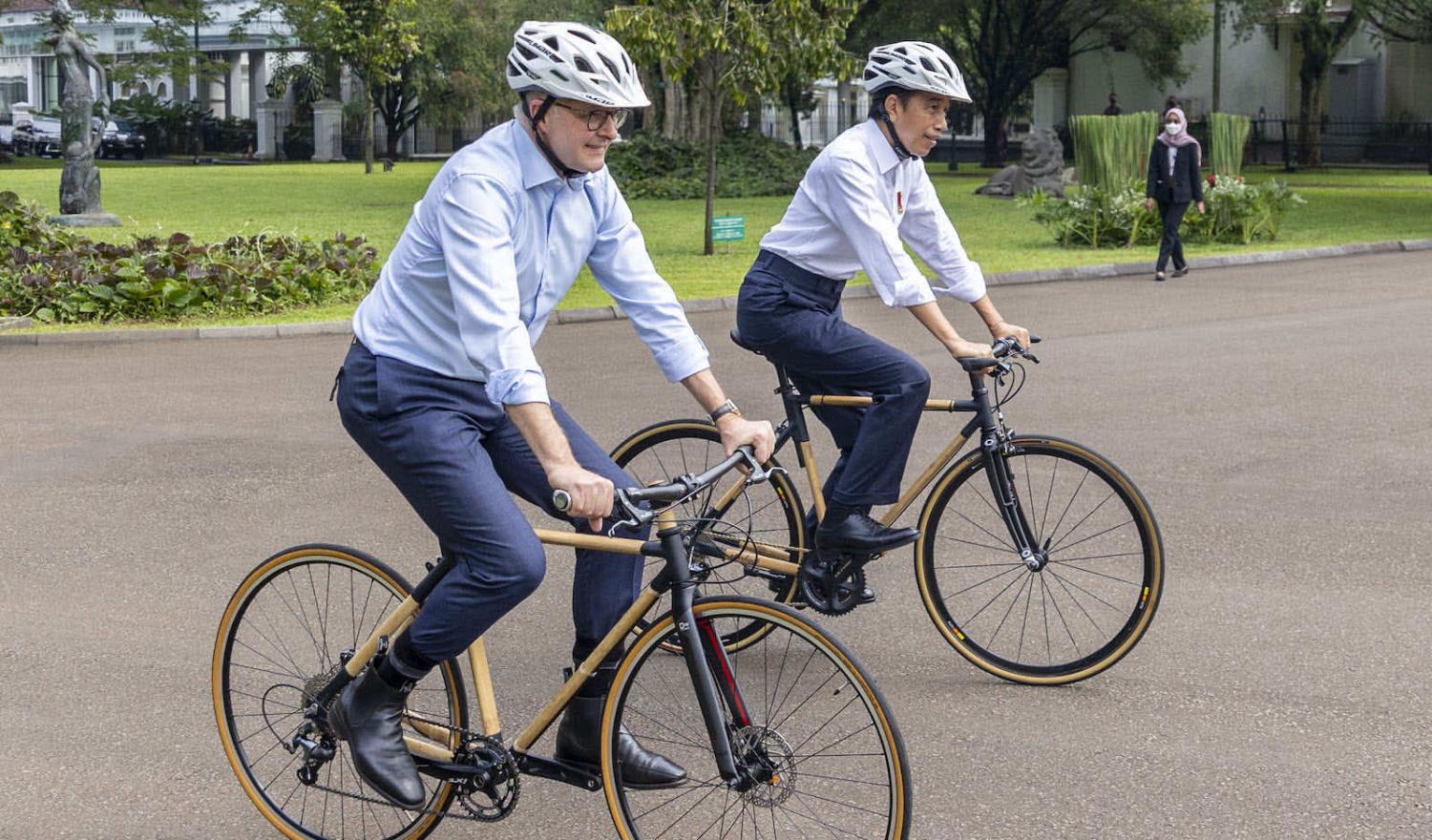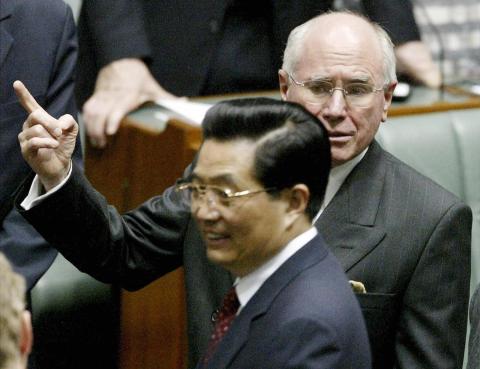Sixth time lucky
Prime Minister Anthony Albanese made a textbook start to re-engagement with Indonesia taking a substantial delegation of ministers and businesspeople on his first bilateral visit – and then getting out of Jakarta to the broader country in Makassar.
But as the sixth prime minister to pursue this diplomatic path established by Paul Keating in 1992 (after some earlier variants), the question must be asked what has changed in an Australia-Indonesia relationship subject to many vicissitudes and then inevitably described as “underdone” in the economic sphere.
While Albanese noted the opportunities for more trade he focused more on the intractable issue of persistent low Australian investment declaring: “I want to see more investment here in Indonesia to help with the development of Indonesia, but also to benefit Australian companies.”
While we have heard this before, there is certainly a new appetite for economic engagement on both sides. For example, former planning and finance minister Bambang Brodjonegoro told an Australian National University seminar this week:
We would like to unlock the potential of the bilateral economic relationship fostering economic cooperation, not only among businesses, but also among communities as well as individuals.
The focus on investment reopens an old Pandora’s box of challenges from poor Asian literacy and short-term investment horizons on the Australian side to corruption and regulatory uncertainty in Indonesia. And this is well traversed ground.
The Department of Foreign Affairs and Trade Blueprint for Trade and Investment with Indonesia says the economic relationship lacks the gravitas of the government-to-government links but “a stronger Australian commercial presence on the ground in Indonesia will help provide this ballast.” And the Business Council of Australia/Asia Society Australia A Second Chance work in this space emphasised the need for patient capital arguing: “Managing expectations in terms of the time, investment required, and level of returns is critical to aligning stakeholders (especially investors and the Board) prior to entry.”*
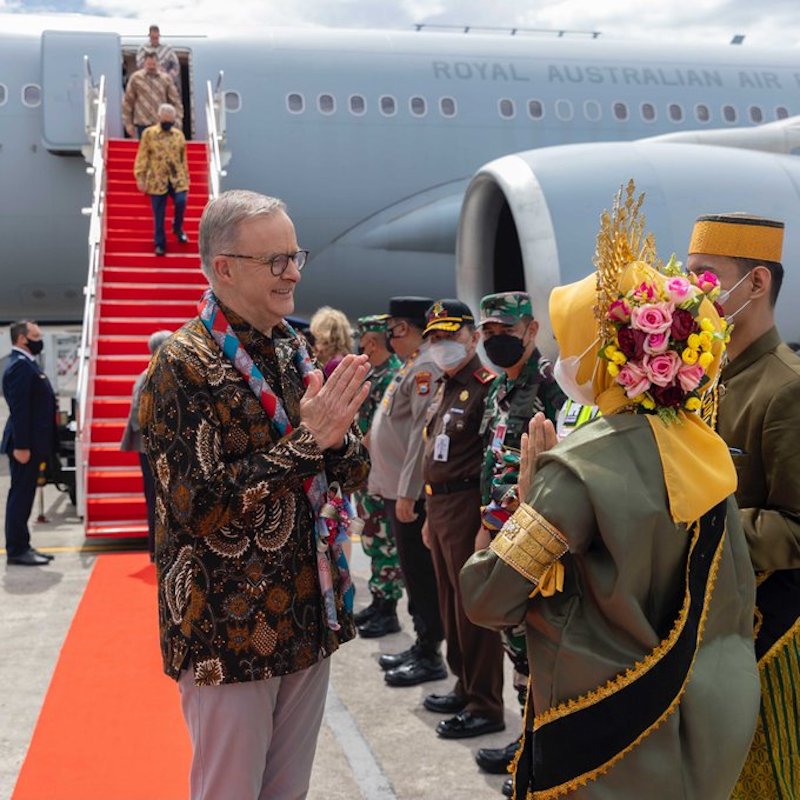
So, in pondering what has changed it is interesting to look at the composition of Albanese’s quickly arranged business team (plus a promised add on) and the more planned group Keating led to Indonesia in 1994 for what was then Australia’s largest offshore economic promotion. Albanese had senior representatives of the Commonwealth Bank, mining company Fortescue, Telstra, conglomerate Wesfarmers, steel company Bluescope, defence company Thales, solar power firm Sun Cable and Monash University. The promised add on is a future visit by Australia’s $3 trillion industry superannuation fund managers, led by former Labor minister Greg Combet.
Keating’s Australia Today Indonesia extravaganza was sponsored by ANZ Bank, Commonwealth Bank, communications company AWA, BHP, law firm Blake Dawson Waldron, Coca Cola Amatil, mining company CRA, Pricewaterhouse, food company MeadowLea, Telstra and Qantas.
It is an interesting roll call of foreign takeovers, exits and changed strategies since the glory days of business engagement under Keating and a practical insight into the long-term investment dilemma. Perhaps (depending on definitions) only Commonwealth Bank and Bluescope (then part of BHP) emerge from this anecdotal measure as paragons of long-term patient Australian on the ground capital, and they have had their own issues.
There are changed and improved economic complementarities these days identified in the DFAT report, which tilt the balance of economic engagement away from the old reality that the two countries were as much competitive commodity exporters as natural business partners. Bambang this week reiterated the Indonesian approach to this: the idea of a powerhouse partnership in which Australian resources, technology and services expertise are combined with low-cost manufacturing capability and resources in Indonesia to supply Indonesia consumers, but also other export markets. Or as he puts it the relatively new bilateral trade agreement “needs to be guided in a direction which will be beneficial to both countries when they create a supply chain to other countries.”
Albanese can’t make these funds pursue a Team Australia Asian investment strategy, but he has a lot more arm-twisting authority than the last government.
In this context there are three interesting and different participants in Albanese’s latest effort at a business reset. Sun Cable’s plan to supply Australian solar energy to the region via an undersea cable to Singapore is substantially driven by the private wealth of entrepreneurs Mike Cannon-Brookes, of Atlassian, and Andrew Forrest, of Fortescue. Australian privately-owned companies such as LinFox have often shown a greater ability to stick with Asian investments longer than some listed companies with demands from investors for quick quarterly returns.
Monash University represents a different sort of quasi-private capital as a big education institution which is drawing on the gains from the long foreign student fee boom and its reserves to diversify into an on the ground presence in a long-term growth market. It presumably will benefit from more patient council (board) members than some listed companies, just like RMIT University has done in Vietnam.
Meanwhile, the superannuation funds have long been the suggested cash cows for funding all sorts of worthy long-term projects. But they are arguably the biggest corporate beneficiaries of a sympathetic Labor government coming to power. The biggest fund Australian Super, which had a presence in China, even talked privately about opening an Indonesian outpost a few years ago. And it should be noted former prime minister Scott Morrison also pushed this idea when the bilateral trade deal was signed. Albanese can’t make these funds pursue a Team Australia Asian investment strategy, but he has a lot more arm-twisting authority than the last government.
So perhaps there are some interesting modest signs of more innovative patient capital to provide the long-sought business “ballast” in the relationship with Indonesia.
Spoilt for choice
US Commerce Secretary Gina Raimondo didn’t hold back at the long-delayed launch of the Indo-Pacific Economic Framework (IPEF) last month declaring it to be “by any account the most significant economic agreement that the United States has ever had in this region.” Time will tell.
But for a bit of context here’s then president Bill Clinton hosting the first Asia Pacific Economic Cooperation group leaders’ summit in 1993: “Future generations may look back and say they can’t imagine how the Asian-Pacific region could have thrived in such a spirit of harmony without the existence of APEC.”
And here’s then president Barack Obama releasing the 2000 page Trans-Pacific Partnership agreement in 2015: “The TPP means that America will write the rules of the road in the 21st century … if America doesn’t write those rules – then countries like China will.”
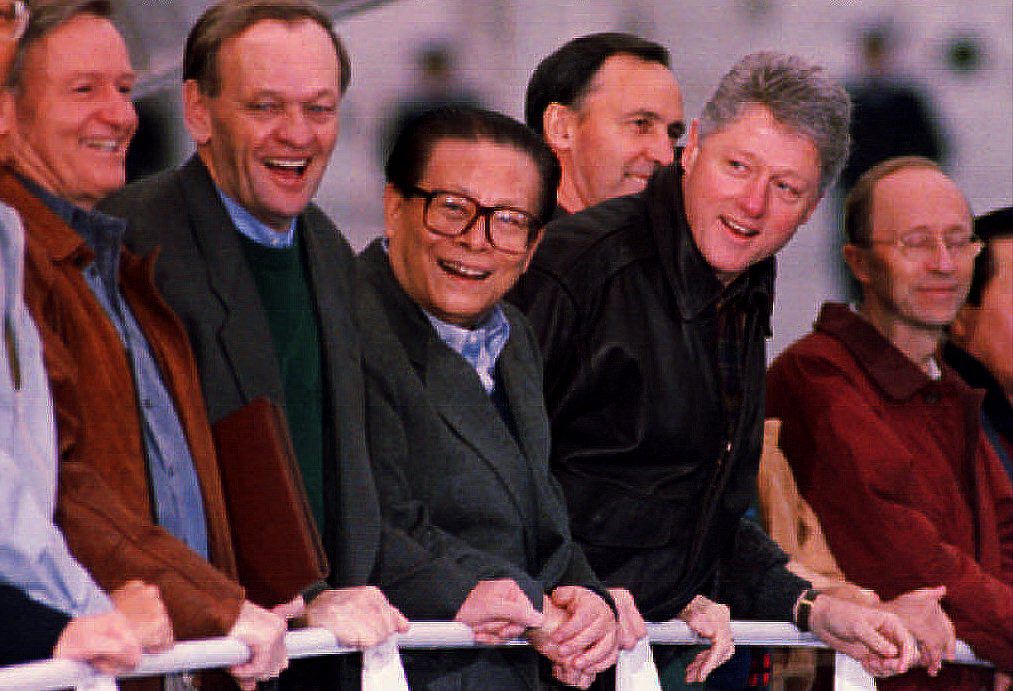
For what amounts to a fuzzy agreement to talk about what economic cooperation might be possible, the IPEF has produced some diverse responses. Deborah Elms, at the Asian Trade Centre, describes it as “the party few wanted to attend” while Nikkei Asia says it “has the potential to grow into a beneficial framework.”
But for a region that now has an overflowing noodle bowl of these competing agreements there has been little discussion about how they fit together. And that’s despite the Biden administration reportedly wanting to produce IPEF results by next year at the time it again hosts the summit of the original such agreement, APEC.
Our roadmap to Asia’s scattergun economic integration seems to hint at a bell curve situation with IPEF taking the region back towards the soft, unlegislated coalition of the willing sort of integration associated with APEC. The key obvious difference is that China is not invited.
And that comes after the peaks of hard and softer legislated integration that has been seen in the Trans-Pacific Partnership variants and the Regional Comprehensive Economic Partnership or to a lesser extent the ASEAN Economic Community.
| ASEAN | APEC | Quad | CPTPP | RCEP | IPEF | |
|---|---|---|---|---|---|---|
| Started | 1967/1992 | 1989 | 2007/2018 | 2016/2018 | 2020 | 2022 |
| United States | ✱ | ✱ | Withdrew | ✱ | ||
| China | Applied | |||||
| Japan | ✱ | ✱ | ✱ | |||
| India | ✱ | Withdrew | ✱ | |||
| United Kingdom | Applied | |||||
| Canada | ✱ | |||||
| Russia | ||||||
| South Korea | ✱ | Applying | ✱ | |||
| Australia | ✱ | ✱ | ✱ | |||
| Mexico | ||||||
| Indonesia | ✱ | ✱ | Interest | ✱ | ||
| Taiwan | Applied | |||||
| Thailand | ✱ | ✱ | Interest | ✱ | ||
| Malaysia | ✱ | ✱ | ✱ | |||
| Singapore | ✱ | ✱ | ✱ | ✱ | ||
| Philippines | ✱ | ✱ | Interest | ✱ | ||
| Vietnam | ✱ | |||||
| Bangladesh | ||||||
| Hong Kong | ||||||
| Colombia | Interest | |||||
| Chile | ✱ | |||||
| New Zealand | ✱ | ✱ | ✱ | |||
| Peru | ||||||
| Ecuador | Interest | |||||
| Myanmar | ||||||
| Brunei | ✱ | ✱ | ✱ | |||
| PNG | ||||||
| Cambodia | ||||||
| Laos | ||||||
| Fiji | ||||||
| Timor Leste | In process | |||||
| ✱ Original member | ||||||
ASEAN and the Quad would not have made this roadmap when they were launched as security fora but now it is striking how they have drifted into the picture. This is due to strategic disunity in ASEAN and a rising focus on somewhat more successful economic integration since the 1992 free trade agreement. Likewise, after starting as a strategic dialogue, the Quad has found a niche to fill with public economic goods but also needs a positive economic message to make its muscling up to China more palatable to other regional partners.
The roadmap also highlights how despite the efforts of its advocates, there is still no real agreed definition of the Indo-Pacific – it is more a geopolitical supermarket. PNG slipped into APEC at the height of its expansiveness in 1993 remarkably ahead of India and Chile. Fiji was quickly recruited to IPEF after it was announced and looked distinctively light on for specifically Pacific Ocean members.
For what amounts to a fuzzy agreement to talk about what economic cooperation might be possible, the IPEF has produced some diverse responses.
There is another apparent contradiction here. The new trend seems to be towards softer integration, for example, on supply chains in the Quad and self-selective participation “pillars” in IPEF. But the real membership action still seems to be in the CPTPP despite its more rigorous rules.
In the end this is partly explained by the remarkable statement of intent in the IPEF announcement that it will allow “the United States and our allies to decide on rules of the road that ensure (my emphasis) American workers, small businesses, and ranchers can compete in the Indo-Pacific.”
The idea that it is now up to the likes of Fijians or Malaysians to find a way for ranchers to export beef to Asia shows how much American economic exceptionalism has shifted from the Clinton and Obamaesque rhetoric. And it, like the chart, shows as The Jakarta Post columnist Endy Bayuni has observed “while ASEAN and the US are on the same page on the Indo-Pacific, they are not necessarily in the same boat.”
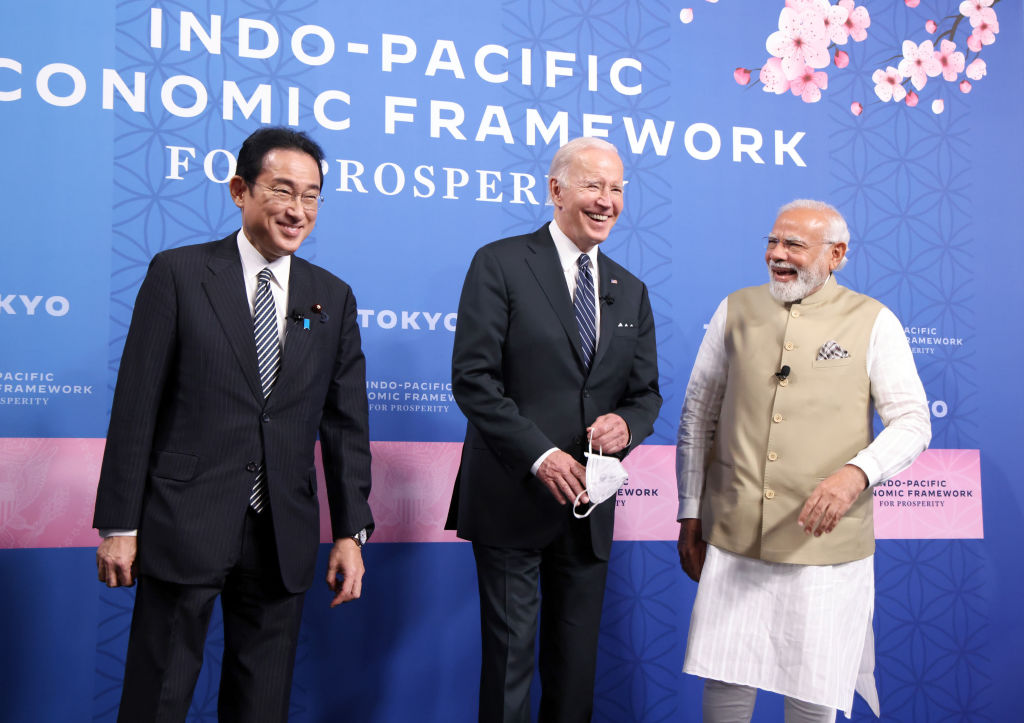
Oversupplied
It says a lot about the way the pandemic inserted supply chains into everyday conversation that two of the icons of the old globalised world are at odds over who can best deliver the bad news.
Last month the Federal Reserve Bank of New York announced it would start publishing monthly a Global Supply Chain Pressure Index (GSCPI) which it tested out in January. It aggregates information to assess the state of supply chains and is already filtering into places such as the World Bank’s latest outlook.
Last month the situation turned bad again after some optimism earlier in the year with the New York Fed now saying: “Recent developments related to geopolitics and the pandemic (particularly in China) could put further strains on global supply chains.”
But the situation seems to have turned much worse at financial services firm Citigroup which produced a major report on demand and supply pressures in trade flows last December which was somewhat optimistic about this year. Now Citi Research is back with its own Citi Global Supply Chain Pressure Index which it says provides a much more wholistic assessment than the Bank down the street. It says the Fed has failed to account for demand side factors and so: “In our view, the FRBNY indicators seek to strip out half of the story ... We do not seek to strip out the demand component.”
And the conclusion:
As long as the pandemic’s risks remain in play, goods demand is likely to stay elevated, and the global economy will be vulnerable to production disruptions and closures of critical ports, as countries struggle to contain the spread of the virus.
At least there’s a good supply of one commodity.
* Greg Earl contributed to the Blueprint for Trade and Investment in Indonesia and A Second Chance.
